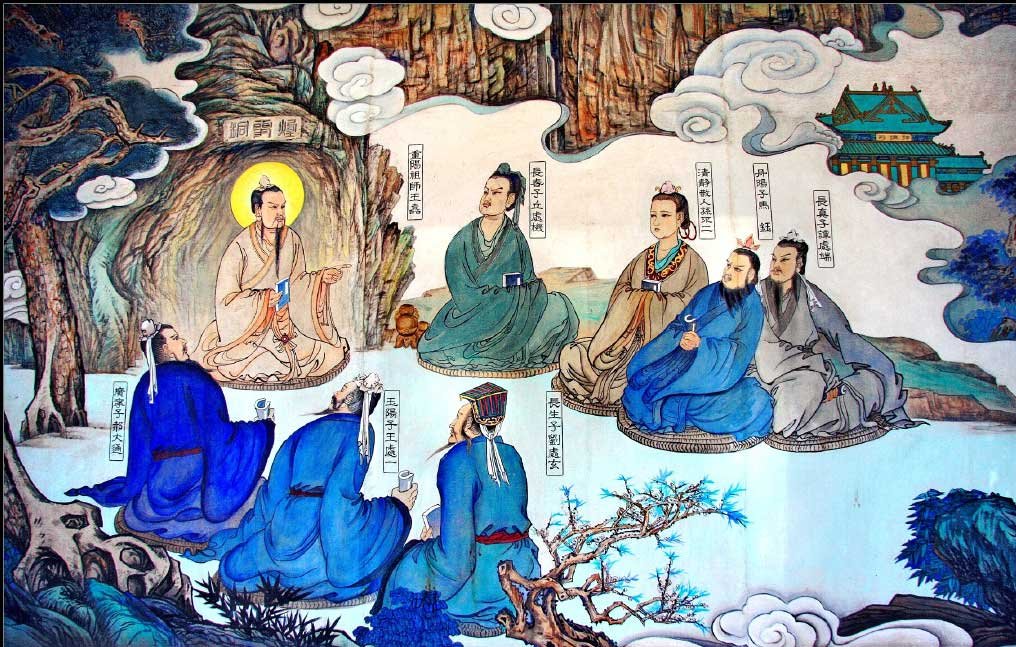Taoism, a profound philosophy and religious tradition that originated in ancient China, offers insights into the nature of existence, balance, and the way to live a harmonious life. In this episode, we delve into key Taoist concepts such as Tao, Wu Wei, and Yin-Yang, explore the role of meditation and ritual, investigate the transformative power of Taoist philosophy, and consider the influence of Taoism on Chinese culture and society.
Introduction to Taoism and the concept of Tao
Taoism, one of the great philosophies of ancient China, is based on the teachings of Lao Tzu, often considered its founder1. At the heart of Taoism lies the concept of Tao, a word usually translated as “way” or “path”. However, Tao encompasses a broader and deeper meaning, signifying the underlying natural order and unity of the universe2. It is both the way things are and the guide for living in harmony with the way things are.
Understanding Wu Wei (non-action) and its importance
Wu Wei, another central Taoist concept, is often translated as “non-action” or “effortless action”3. It does not mean doing nothing, but rather acting in a way that flows with the natural course of life, without struggle or excessive effort. Wu Wei involves responding to circumstances spontaneously and intuitively, in accordance with the Tao. It is considered a key to achieving balance and harmony in life.
Explanation of the Yin-Yang principle
The principle of Yin-Yang symbolizes the complementary nature of opposing forces and the way they interact to form a dynamic system in which the whole is greater than the parts4. Yin is often associated with qualities such as softness, darkness, femininity, and receptivity, while Yang is associated with hardness, light, masculinity, and activity. The interplay of Yin and Yang, in continual flux, mirrors the changing patterns of the universe and life.
Role of meditation and ritual in Taoism
Meditation and ritual play significant roles in Taoist practice. Taoist meditation techniques aim to cultivate a quiet mind, inner peace, and an intuitive understanding of the Tao5. Rituals, which can include offerings, chanting, and movement, serve to connect individuals to cosmic forces and patterns. Through meditation and ritual, Taoists seek to align themselves with the Tao and foster spiritual growth and transformation.
The transformative effect of Taoist philosophy
Taoist philosophy has the potential to transform one’s perspective on life and the world. By understanding and living in accordance with the Tao, individuals can achieve a state of inner peace, balance, and harmony6. Taoism promotes a way of life that is in tune with nature, values simplicity, and fosters an appreciation for the profound mystery and beauty of existence.
Discussion on the Tao Te Ching and its teachings
The Tao Te Ching, traditionally attributed to Lao Tzu, is the foundational text of Taoism7. Composed of 81 short chapters, it presents a series of teachings on how to live in harmony with the Tao. Its profound and often paradoxical verses explore themes such as the nature of Tao, the practice of Wu Wei, the interplay of Yin and Yang, the virtues of simplicity and humility, and the perils of desire and attachment.
Taoism’s influence on Chinese culture and society
Taoism has deeply influenced Chinese culture and society, impacting fields such as philosophy, art, literature, medicine, and martial arts8. It has shaped Chinese attitudes towards life, nature, and the universe. Taoist ideas have permeated everyday life in China, from traditional health practices like acupuncture and qigong, to popular folk customs and festivals. Taoism also played a role in the development of Confucianism and Chinese Buddhism.
Conclusion
Through exploring key concepts such as Tao, Wu Wei, and Yin-Yang, as well as the practices of meditation and ritual, we come to appreciate the profound wisdom and transformative power of Taoist philosophy. The teachings of the Tao Te Ching and the influence of Taoism on Chinese culture highlight the enduring significance of this ancient tradition. As we delve into the heart of Taoism, we discover a path that invites us to embrace the mystery of existence, live in harmony with the natural world, and cultivate inner peace and balance.
References
Footnotes
- Stanford Encyclopedia of Philosophy. (2020). Daoism. Retrieved from https://plato.stanford.edu/entries/daoism/ ↩
- The Metropolitan Museum of Art. (2004). Taoism and the Arts of China. Retrieved from https://www.metmuseum.org/toah/hd/taoi/hd_taoi.htm ↩
- Internet Encyclopedia of Philosophy. (2021). Daoist Philosophy. Retrieved from https://iep.utm.edu/daoism/ ↩
- Encyclopedia Britannica. (2020). Yin and Yang. Retrieved from https://www.britannica.com/topic/yinyang ↩
- Wong, E. (1997). Taoism: The Road to Immortality. Shambhala. ↩
- Kohn, L. (2009). Introducing Daoism. Routledge. ↩
- Lao Tzu. (1989). Tao Te Ching. (S. Mitchell, Trans.). Harper Perennial. ↩
- Centre of Taoist Studies, Chinese University of Hong Kong. (2022). Daoist Culture. Retrieved from http://www.cuhk.edu.hk/rct/daosim.html ↩
Top of Form
